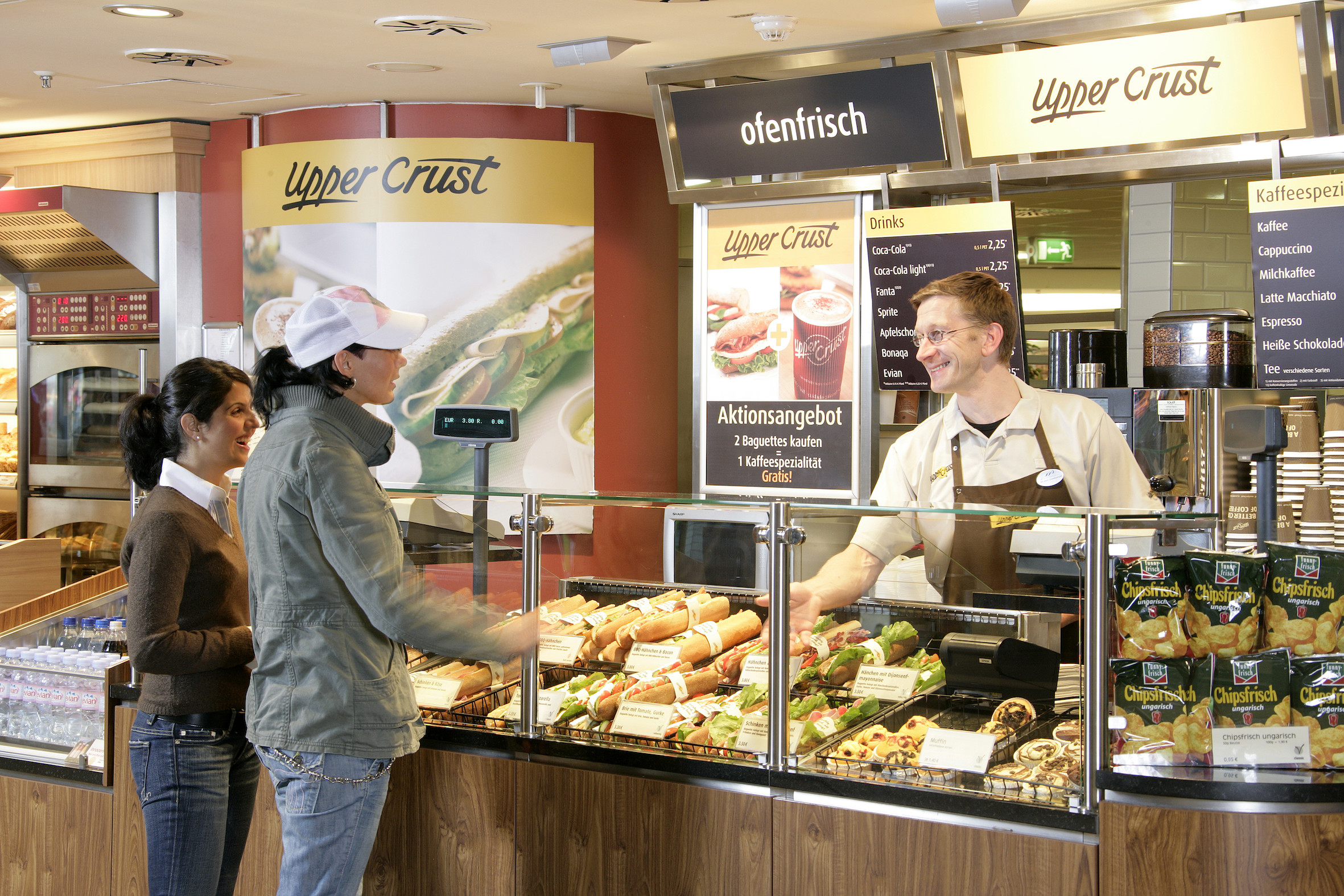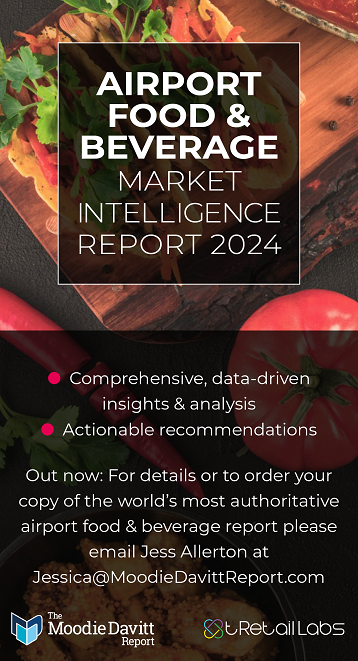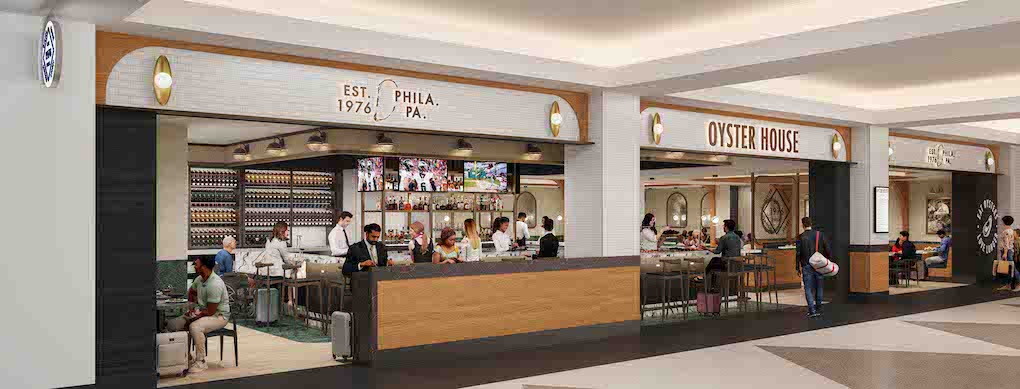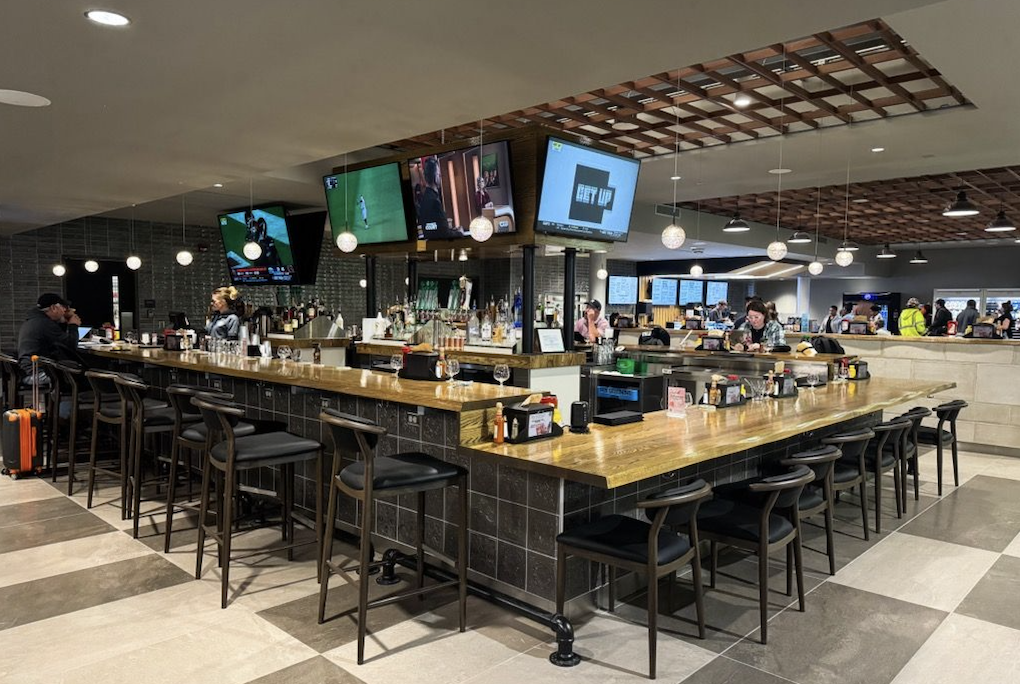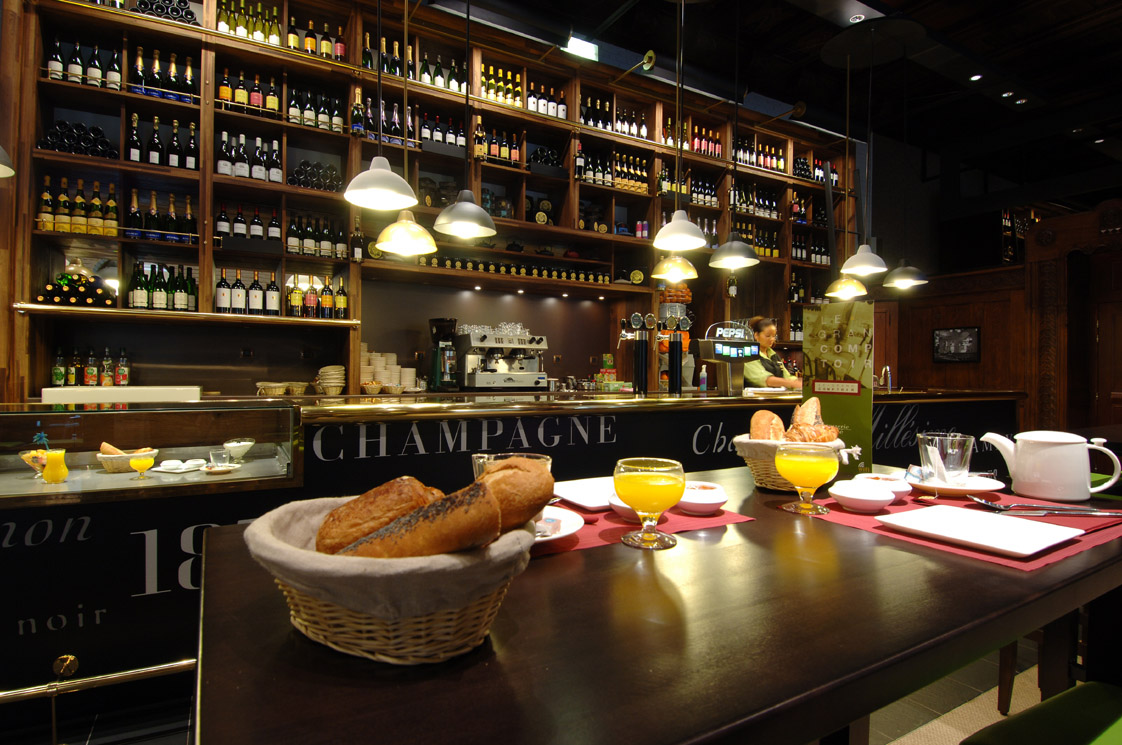
INTERNATIONAL. In 2021 SSP Group marked 60 years since it began offering food services to travellers. Created as a division of airline company SAS in 1961 – called SAS Catering – the company is now one of the leading travel F&B players worldwide, with operations in 35 countries and staff numbers in the tens of thousands.
In a round-up of its history shared with The Moodie Davitt Report for this feature, SSP comments: “When the company was established, instant mashed potato had only just been invented, Julia Child was the TV chef to watch in the US, and Sprite had recently been launched by Coca-Cola to compete with 7-Up. The culinary scene at airports and rail stations was a similarly unrecognisable landscape.”
That landscape began to change in the 1990s and 2000s, in parallel with SSP’s own structure and development. SAS was purchased by Compass Group in 1993 and rebranded as Select Service Partner (SSP) in 1997. Its geographical expansion gathered pace, and it began operations in Asia with the opening of outlets in Bangkok in 1995, followed by an entry into the Hong Kong market in 1998.
Of the wider food standards in the industry, then Managing Director Johann Weinzettl said at an ACI conference in 2000 that airport food outlets were for “distress purchases”, and that few travellers would choose to eat at them. But things were set to change, with SSP contributing to that transformation.

| SSP Voices: Merja Lehto, Chief Shop Steward, Helsinki Airport “Life at Helsinki Airport was very different when I started 33 years ago, with far fewer flights than we have today. Flight delays were a far more regular occurrence, in fact “delay” was probably the most common word we used around the airport in my first years, with many of our sales coming from providing food for stranded passengers. Today, with greater availability of much more exciting ingredients, the food we can serve is of a much greater quality. The old days were about meeting basic food needs – a slice of white bread and a couple of slices of cheese or ham was a pretty standard offering – but today, the entire world is on our doorstep, and we can take inspiration from the cultures and people around us, drawing on our own travel experiences and the many destinations on the departures board.” Merja Lehto began working with SSP in 1998. She started as a chef at Helsinki Airport, and still works in the kitchen today. |
New demands from a new type of traveller
The rise of low-cost carriers in Europe and the US in the 1990s paved the way for a new generation of travellers. As legacy carriers cut costs – and onboard services – travellers increasingly expected more choice and quality from food services at airports, either for dining in or taking onto the aircraft.
SSP notes: “Accustomed to higher quality offerings on high streets, travellers demanded the same choice and value when travelling. They wanted a range of offers and ‘brands’ were becoming an essential element in the F&B mix.”
In 1982, London Waterloo rail station supported just ten outlets, almost none of which were recognisable offers. By 2007, that number had risen to 27, and well-known names such as Costa Coffee, Krispy Kreme and McDonalds were part of the line-up.
A similar picture emerged at leading airports, with well-known brands now expected by consumers.
SSP states: “Offering brands such as Burger King, Marks & Spencer or Starbucks, which became part of the SSP portfolio in September 2008, wasn’t just about creating a better experience – as SSP’s strapline stated at the time. It also made commercial sense. An internal study at the time found that replacing a non-specific burger outlet at an airport with a branded offer could increase revenue by +30%.”
In the 2000s SSP also began to develop its in-house offers. A review of its brand range in 2002 led to a focus on its owned brands, including Upper Crust, (which served its first customers at London’s Waterloo station in 1986) and Ritazza. These remain strong commercial performers for SSP today.
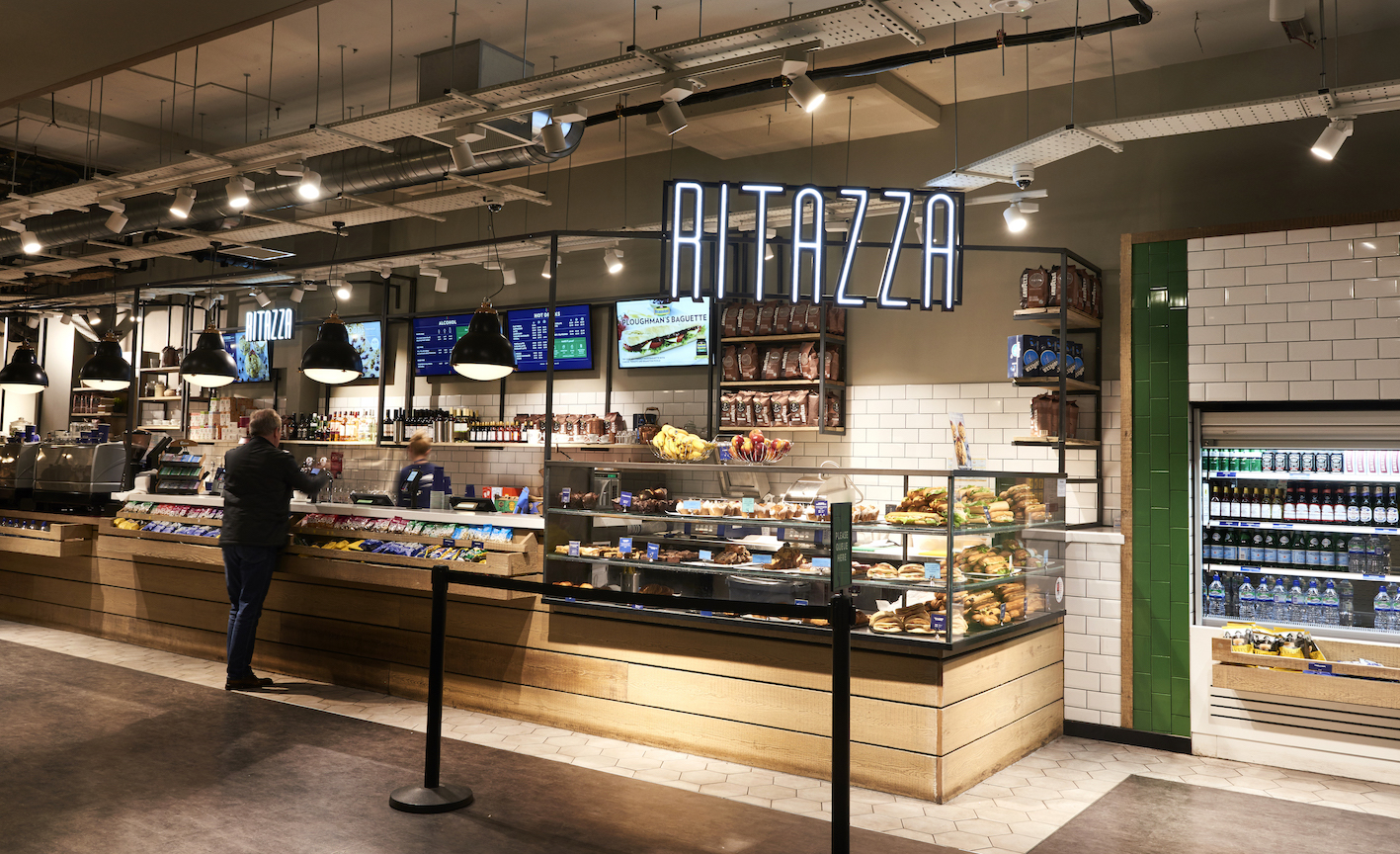
Sense of Place to the fore
As airports recognised that travellers were seeking an experience that reflected the city or region, food & beverage became one way to communicate Sense of Place.
An early SSP example of a concept that fitted this brief was Kon-Tiki at Oslo Gardermoen Airport, a café which celebrated the adventures of Norwegian explorer Thor Heyerdahl who, in 1947, crossed the Pacific Ocean on a traditional raft. This was followed by two new outlets inspired by the city’s Vigeland sculpture park.
In Copenhagen, the Tivoli restaurant paid homage to the famous pleasure gardens. In the US, the company opened a café at Montego Bay Sangster Airport which was themed around Jamaica’s first bobsled team, made famous by the film Cool Runnings. In the UK, the award-winning Grain Loft at Manchester was inspired by the city’s industrial heritage.
Local restaurant brands helped to bring a flavour of downtown to the terminals. For SSP, early examples included the first franchise of Victoria Peak’s legendary Café Deco, introduced to Hong Kong International Airport’s East Hall; and The Palm at JFK, an airport version of the New York steak house that began trading in 1926.
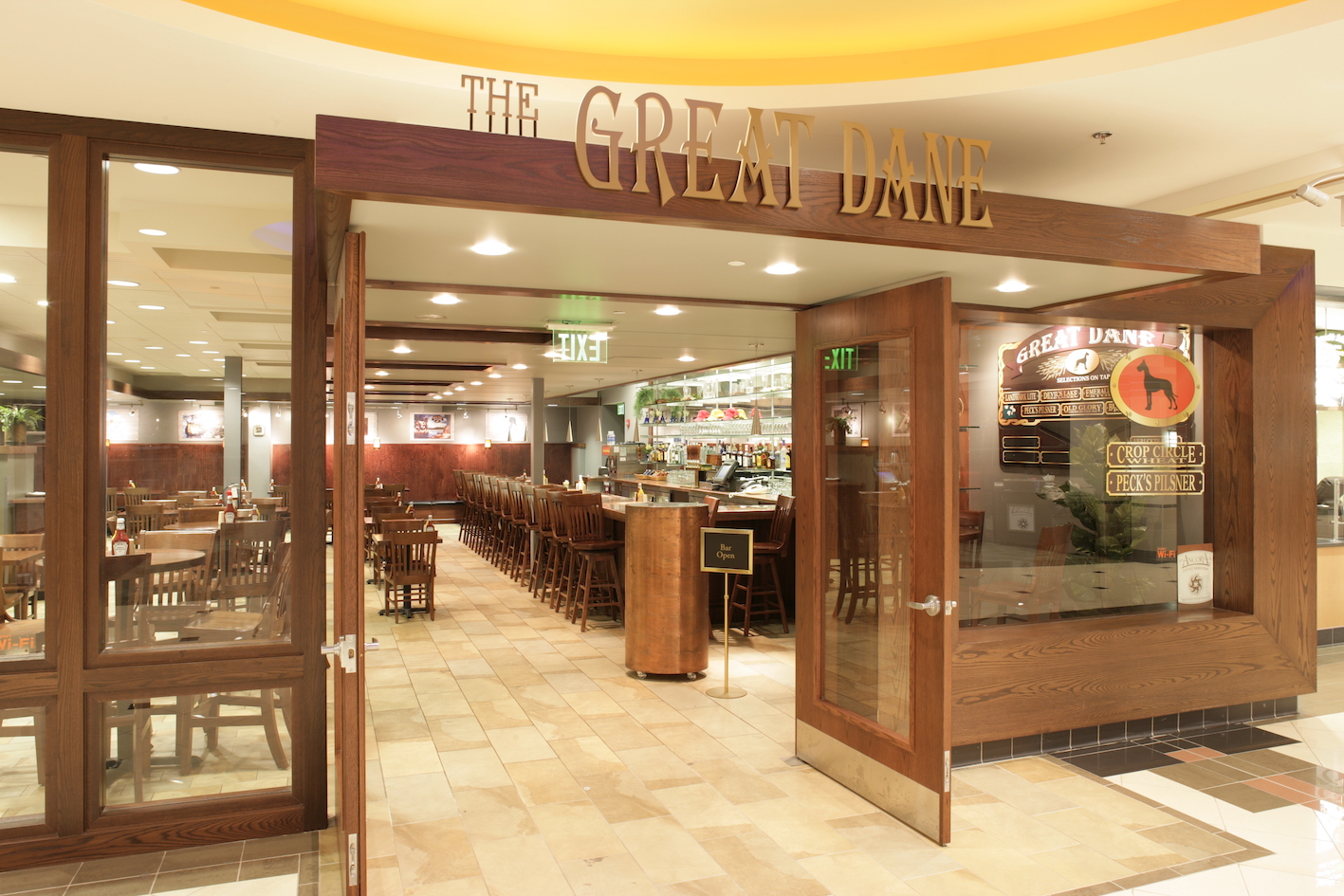
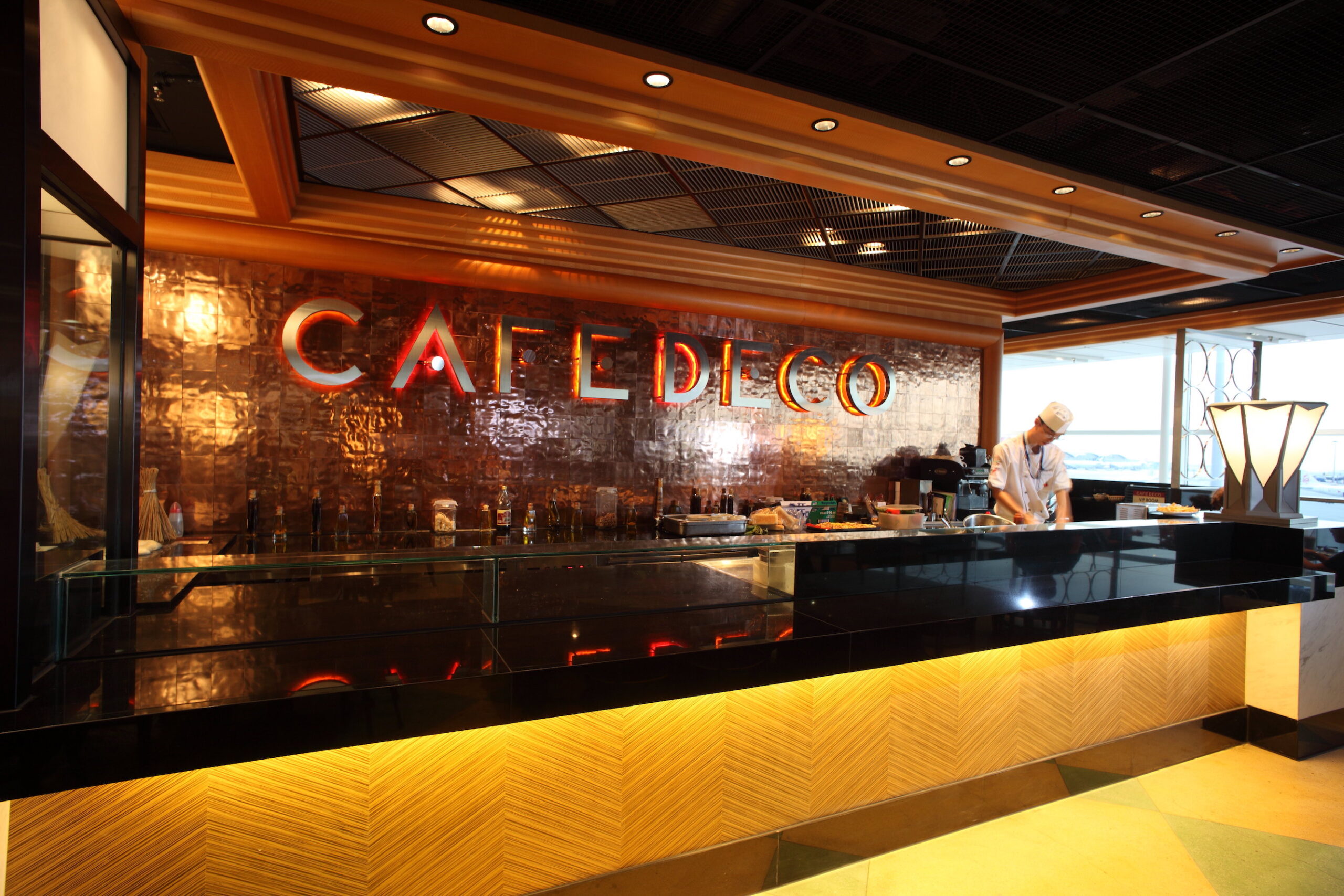
Adapting high street brands to make them operationally and commercially viable in the travel landscape was refined, enabling names such as Asian favourite Ajisen Ramen to take their first steps in a new channel. Other concepts reimagined for the airport include convenience concept REWE To Go for the rail sector and L’Osteria, which made its first foray into the airport market in partnership with SSP.
Celebrated chefs also began to front ‘made for airport’ concepts. Marcus Samuelson and Dani García were two household names with whom SSP partnered in the early 2000s, followed later by international stars such as Jamie Oliver.
Some of these, such as the open-sandwich eatery created Danish TV chef Adam Aamann, offered mainly grab & go options. Others, such as Gilles Dupont’s Altitude at Geneva Airport, which was listed in the 2010 Michelin Guide, offered an up-scale option that served fine dining to passengers as well as visitors from the city.
SSP adds: “Over the decades, the food choices consumers made continued to evolve. In the 1990s, the concept of ‘healthy eating’ was a growing force. The reality, however, was that although many consumers said they wanted healthy choices, the foods they actually bought while travelling were often comfort foods, far from low cal or low fat. As the decade wore on, this began to change too, and ‘health forward’ concepts such as Camden Food Co. moved very firmly into the mainstream.”
‘On the go’ eating became a part of the travel experience – for example coffee that had been served in china was now presented in disposable cups. A similar trend was happening in food too; Upper Crust baguettes for example, were tested at development to make sure they could be eaten while being held in one hand.

| SSP Voices: Sukh Tiwana, Chief Procurement Officer “Today our outlets offer a much broader range of products. Thirty years ago, filter coffee was king everywhere – it could sit there all day on the hot plate. Nowadays, we provide a full menu of different coffees, from lattes to flat whites, all served by trained baristas. The same goes for wine. When I first started out, the wines we offered were ‘red’ or ‘white’, whereas today we provide a huge choice of styles from Chardonnay to Sancerre, Rioja to Chateauneuf du Pape and of course Prosecco. “Similarly, when I first began working with SSP in the 1990s, not even vegetarian options were offered everywhere, but now our stores offer an array of gluten-free, vegan or dairy-free ranges with detailed nutritional information so that health-conscious customers can make informed decisions. “Even more striking is that we had approximately 30 to 40 brands 30 years ago and today we have over 500. This means we can now provide bespoke solutions for our clients and customers across the world. Indeed, it is this type of complexity that the business thrives on. We’ve seen the travel sector transform, with innovations such as the 2001 introduction of M&S Simply Foods and we have a number of Michelin starred restaurants dotted around the world. That being said, there are certain products, such as the burger, which remain global bestsellers.” |
A growing commercial force
Against the backdrop of these food trends, SSP business grew too. In 2000, the company made its US debut when it won a contract to operate F&B outlets at 19 locations across Detroit Metropolitan Wayne County Airport’s new Midfield Terminal. In the same year it captured a contract for 16 branded outlets at JFK’s new Terminal 4. The company also established its first business in Australia in 2000, and its ESKYBAR opened its doors in time to welcome visitors to the 2000 Olympic Games.
Travel also changed as new rules introduced after the terror attacks of 11 September 2001 led to longer dwell times – SSP says its focus evolved to offering anxious passengers a ‘safe space’.
The company’s corporate ownership evolved further when, in 2006, SSP was purchased from Compass Group by EQT Partners for £1.2 billion and, two years later, the ‘Food Travel Experts’ slogan was added to its name. In 2014, the company floated on the London Stock Exchange.

During the following decade, an ambitious expansion plan continued. In 2008, the company made its debut in India with the opening of a food village at Delhi Indira Gandhi International Airport. Other market firsts included Israel in 2017, Brazil two years later, and Malaysia in 2020, taking its global presence to 35 countries.
Although much of the company’s growth has been organic, throughout its history SSP has also had a strategic focus on acquisitions. In 2008, it secured around 20% of the German airport F&B market with the acquisition of Lufthansa’s airport restaurant business. Eight years later, it inked a deal to bolster its presence in the Indian market by taking a stake in Travel Food Services, and in 2019, it secured a majority share of Australian F&B company Red Rock.
By 2015, the company employed around 30,000 people, rising to 40,000 in 2019.
A presence in rail
From its origins as the catering arm of British Rail, the company has also had a strong presence at leading railway stations, offering grab-and-go coffee for commuters with short dwell times, to luxury dining at Train Bleu at the Gare du Lyon in Paris.
Dramatic station transformations have also been a focus of SSP’s development. When he was planning the renovation of London’s St Pancras Station, Project Director Mike Luddy said his intention was to ‘re-engineer the perception of a railway station’. SSP was a part of that plan, and M&S Simply Food was among the brands trading at the spectacular new location. Then in 2016, the company sealed a contract to operate a 350-seater food court at Hung Hom, marking SSP’s first venture in the Chinese rail sector.
When a radically refurbished London Bridge opened toward the end of the decade, a new concept called Urban Express – with products ranging from premium brands including Berry Brothers wines to Cook frozen meals – was created especially for the location.
Onboard catering division Rail Gourmet also began providing food services for the Royal train, an honour it still retains today.
| SSP Voices: Gerard D’Onofrio, Managing Director, SSP France “During the time that I have worked for SSP France, the very meaning of travel catering has changed. The French context perhaps differs to other global markets in that we have historically had a very prescriptive idea of how the service industry should operate. Table service was the standard for French diners – and F&B providers – with brands such as Hippopotamus a well-used offer. “Fast-casual brands such as Pret and American-style coffee shops like Starbucks have transformed the space and are much stronger commercial performers. That’s not to say we have totally departed from the service we delivered in the early days, rather we have evolved and adapted to offer a more complex and varied portfolio, one which suits the needs of our clients and provides the variety that consumers have come to expect. When tendering for a major contract at Montparnasse station for example we were asked to include 40 brands at 40 different locations – that’s a very different challenge to those we met in my early days at SSP.” Gerard D’Onofrio has worked at SSP France since 2003 and has been Managing Director since 2009. |
Role of technology
Technology has also transformed the way SSP communicates with its clients and customers. At the turn of the millennium, this meant using progressive solutions such as CD-ROMs that housed presentations as a means to win business. Much has changed since.
The company offered wireless phone charging for the first time in Scandinavia in 2016, and in the same year, SSP began working with i-Coupon to introduce a boarding card scanning system that removed the need for paper vouchers issued when flights were delayed.

The COVID-19 crisis accelerated the adoption of digital tools in airport F&B as in most other areas of life, and concepts such as digital order and pay solutions are now being rolled out across many parts of the business. Investment in digital kiosks and self-service checkouts has provided further options for customers looking to save time or to manage their time at the airport more efficiently.
| SSP Voices: Jonathan Davies, Group Deputy CEO and Chief Financial Officer “The thing I’ve enjoyed most about my many years as CFO of SSP has been the continued growth and development of the business. Since SSP was first established as a stand-alone business within Compass in 2004, it has been transformed into a highly regarded FTSE business and seen a huge expansion of its operations, entering over 20 new countries. “It’s been quite a journey, through many incarnations, including private equity ownership and as a public company since the IPO in 2014. Over the years we’ve navigated many challenges, the most extreme being the recent pandemic, and I’ve always been amazed by the resilience of the SSP team and the way it has responded to the ever-changing demands of the travel sector.” Jonathan Davies has worked at SSP since 2004, helping to drive the company’s introduction to many markets and forging relationships with leading brands. |
The next chapter
As the world has changed through the recent (and continuing) travel crisis, the food travel retail industry is evolving too. Food travel experts have introduced more simplified ranges, while SSP also notes that “operational flexibility and organisational and process simplification are even more important to create the right commercial model” when passenger numbers are low. It adds that strong relationships with clients are now even more crucial.
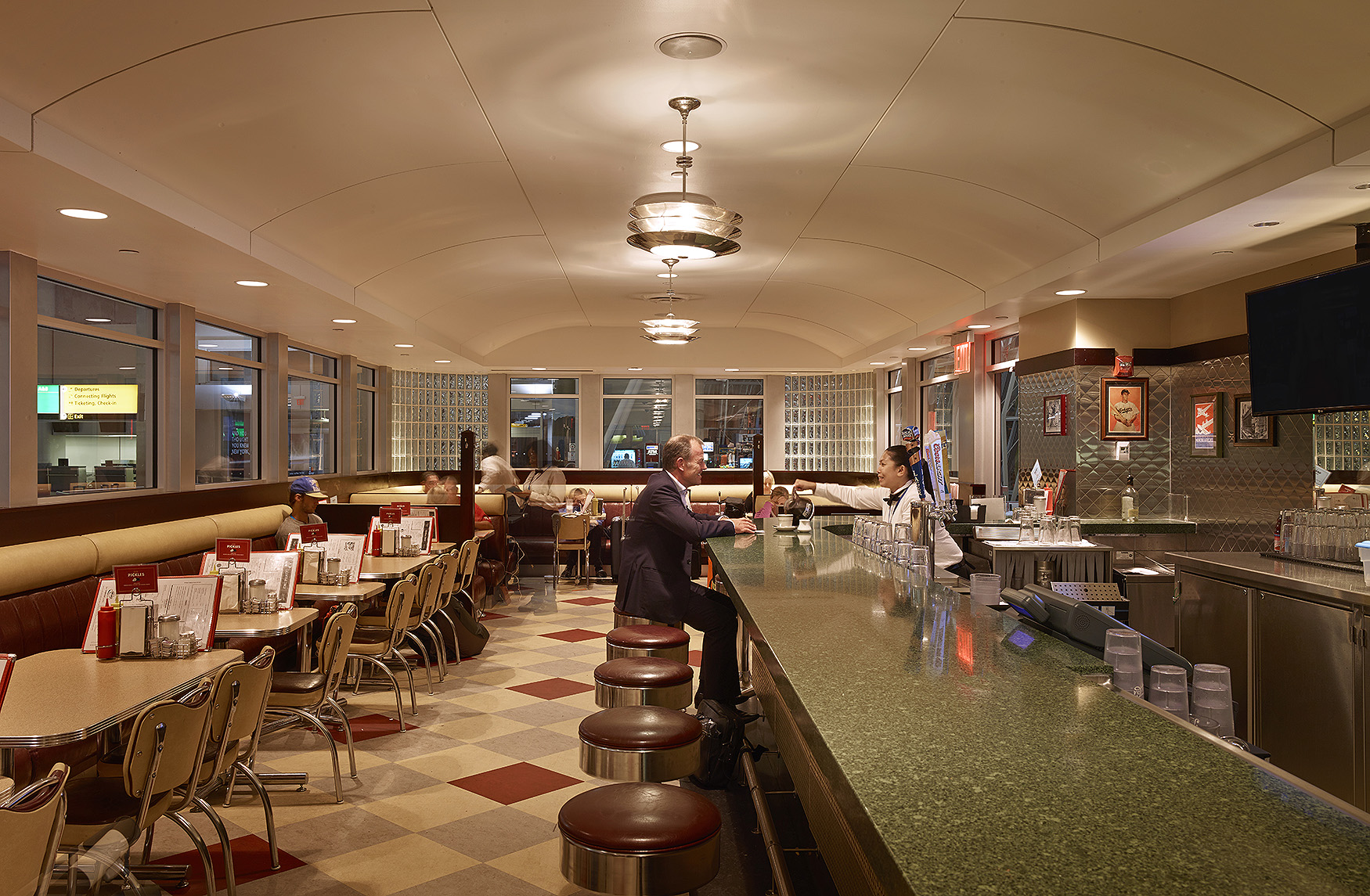
Although the past two years have been the toughest in the company’s 60-year history, SSP says that it has protected is financial position, and is continuing to trade profitably. Sales have returned to two thirds (66%) of 2019 values, and nearly 2,000 (three quarters) of SSP’s units are now open.
Some contracts have been extended and new business won, while relationships with clients and brand partners “go from strength to strength,” says SSP.
According to Deputy CEO Jonathan Davies, speaking at a senior leadership meeting earlier this year, the business is now “poised to take advantage of the recovery”.
| SSP Group: A 60-year timeline in summary 2020 SSP wins tender for 24 units at Dublin Airport. It also announces plans to acquire the Station Food GmbH travel catering business from DB Station&Service, a subsidiary of Germany’s national railway company Deutsche Bahn. SSP enters the Malaysian market. 2019 SSP opens its first F&B units in Brazil, acquires the majority of Australian F&B company Red Rock’s food travel operations and opens the first ever Burger King in a Belgian airport at Brussels South Charleroi. 2017 SSP agrees to acquire part of the Stockheim Group, a travel concessions business based in Germany. It also debuts in Philippines when it wins a tender to operate (through a joint venture) at Mactan–Cebu International Airport. SSP awarded a contract at Chicago Midway International Airport and makes its debut in the Israeli market. 2016 SSP increases its presence in the Indian market, creating a joint venture with K Hospitality Group, owning 49% stake in Travel Food Services. 2015 SSP makes first venture into the Chinese rail sector with contract win at Hung Hom Station, Hong Kong 2014 SSP lists on UK stock market. 2010 The company closes a US$100 million deal to operate at Sacramento International. 2009 SSP makes its debut in Australia at Sydney Airport. 2008 SSP acquires airport restaurant business of Lufthansa. SSP is rebranded ‘Food Travel Experts’ to underscore the company’s leading position in the food travel retail sector. 2006 EQT Partners acquires SSP from Compass plc for £1.2 billion. 2004 Acquisitions include Mitropa AG and Creative Host Services in the US. SSP established as specialist travel and concessions division of Compass Group. 2001 Acquisitions include Louis Catering in Cyprus and Gourmet Nova in Finland. 1997 The company name is changed to Select Service Partner. Travellers Fare is integrated into SSP. 1995 The company breaks into the Asian market with a contract win at Bangkok. 1993 SAS is acquired by Compass Group plc. The company name is changed to Scandinavian Service Partner. 1992 Compass Group plc acquires Travellers Fare. 1984 SAS Catering changes its name to SAS Service Partner. 1973 British Rail Catering takes the name Travellers Fare. 1966 British Rail Catering is formed, operating within British Transport Hotels. 1961 SAS Catering a, division of SAS Airline Group, is founded. |



